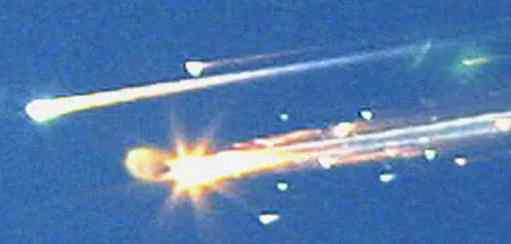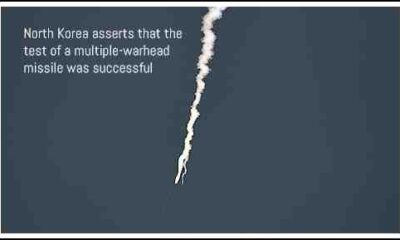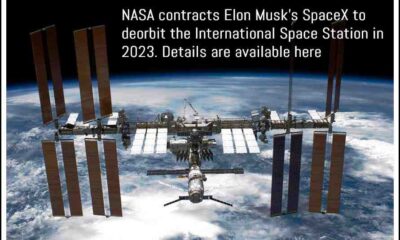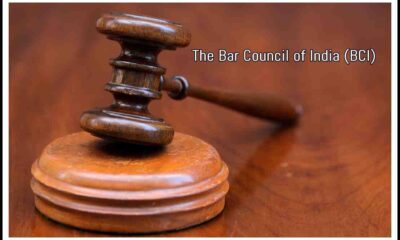Science –Technology
Space Shuttle Columbia Disaster, A tragic reminder of the dangers of space exploration
Published
1 year agoon

The devastating news of the Space Shuttle Columbia catastrophe shocked the globe on February 1, 2003.
The devastating news of the Space Shuttle Columbia catastrophe shocked the globe on February 1, 2003. In addition to the loss of seven astronauts, this incident brought attention to the inherent dangers of space travel. In this essay, we’ll go through the crucial moments that caused the catastrophe and talk about how it affected the space programme.
The Columbia catastrophe
Shuttle to Space Disaster occured as Columbia was on its 28th mission, STS-107. A piece of foam insulation that had detached from the external tank during the launch hit the shuttle’s left wing. Because of the extent of the damage, superheated gases were able to penetrate the wing upon re-entry, which led to the shuttle’s destruction.
Everyone of the seven crew members—commander Rick Husband, pilot William McCool, and Kalpana Chawla, Laurel Clark, David M. Brown, Michael P. Anderson, and Ilan Ramon—died in the accident. The disaster dealt the space community a fatal blow and served as a sobering reminder of the inherent dangers of space research.
Its investigation
An inquiry was started to identify the accident’s cause following the catastrophe. It was subsequently determined that the disaster’s main cause was the foam insulation that hit the shuttle during launch. The insulation was discovered to have a design defect that made it more likely to separate during launch, and NASA came under fire for doing nothing about the problem in spite of prior accidents.
The review also revealed that the culture and decision-making procedures at NASA played a role in the mishap. Lack of responsibility and communication resulted in a lack of sharing and use of crucial knowledge. As a result, NASA was compelled to update its safety procedures and fundamentally alter its corporate culture.
The Space Program is affected.
There was a two-and-a-half-year pause in space shuttle missions as a result of the Columbia tragedy, which had a significant influence on the space programme. The incident made clear the necessity for more stringent safety procedures, which had a big impact on how NASA conducted business. For instance, NASA created the Office of Safety and Mission Assurance, which is responsible for managing safety for all of the agency’s operations.
The catastrophe also affected how the general public thought about space travel. The Columbia accident served as a sharp reminder that space exploration is still a hazardous and perilous activity, even if the public had gotten accustomed to the routine of space shuttle launches.
Keeping the Columbia Team in Mind
While being tragic, the Columbia catastrophe serves as a reminder of the bravery and sacrifice of the astronauts who have dedicated their lives in the name of space exploration. The seven Columbia mission crew members will always be honoured for their bravery and commitment to advance cosmological research.
Read Also: Goal of the Perseverance rover’s third year on Mars is to discover prehistoric microbial life
The Space Shuttle Columbia accident was a terrible occurrence that rocked the space community and served as a warning to the rest of the world about the inherent dangers of space travel. The incident significantly altered NASA’s safety procedures and decision-making procedures, and it continues to serve as a sombre reminder of the bravery and sacrifice of the astronauts who gave their lives to explore the uncharted.
In order to protect people who journey into the unknown, we must never forget the lessons learned from the Columbia catastrophe as we push the limits of space exploration. We must work to strengthen safety and communication procedures.
What is a space shuttle used for?
Credent TV Editorial Team

You may like
-


North Korea asserts that the test of a multiple-warhead missile was successful
-


The Student Wing of Congress storms the Exam Body NTA office and locks it from within
-


“During President Murmu’s address to Parliament, PM Modi was shown 73 times, and LoP Rahul Gandhi was shown six times”: Congress
-


NASA contracts Elon Musk’s SpaceX to deorbit the International Space Station in 2023.
-


A Caution For The CBI In The Delhi Court’s Arvind Kejriwal Custody Order
-


Bar Council of India requests that bar associations abstain from demonstrating in opposition to new criminal laws
